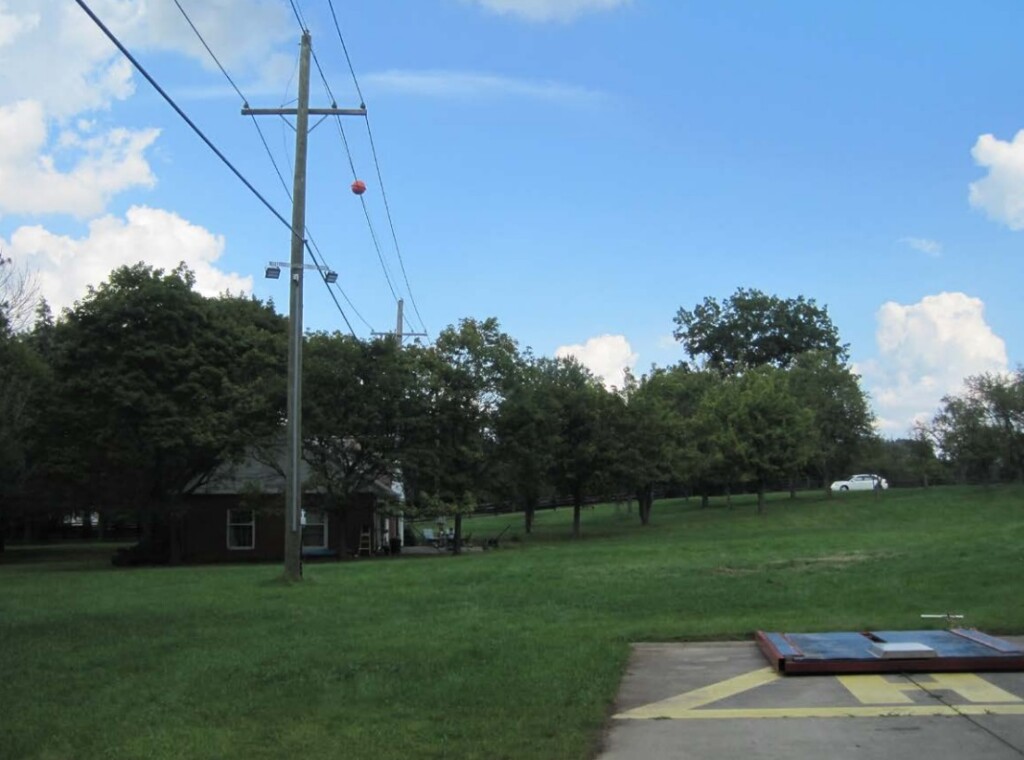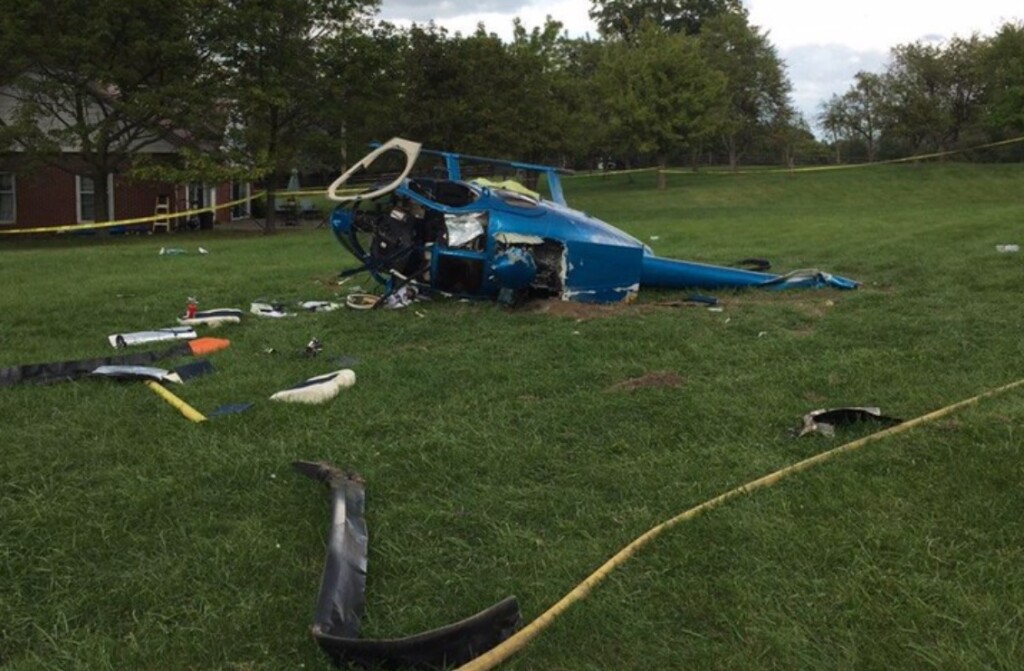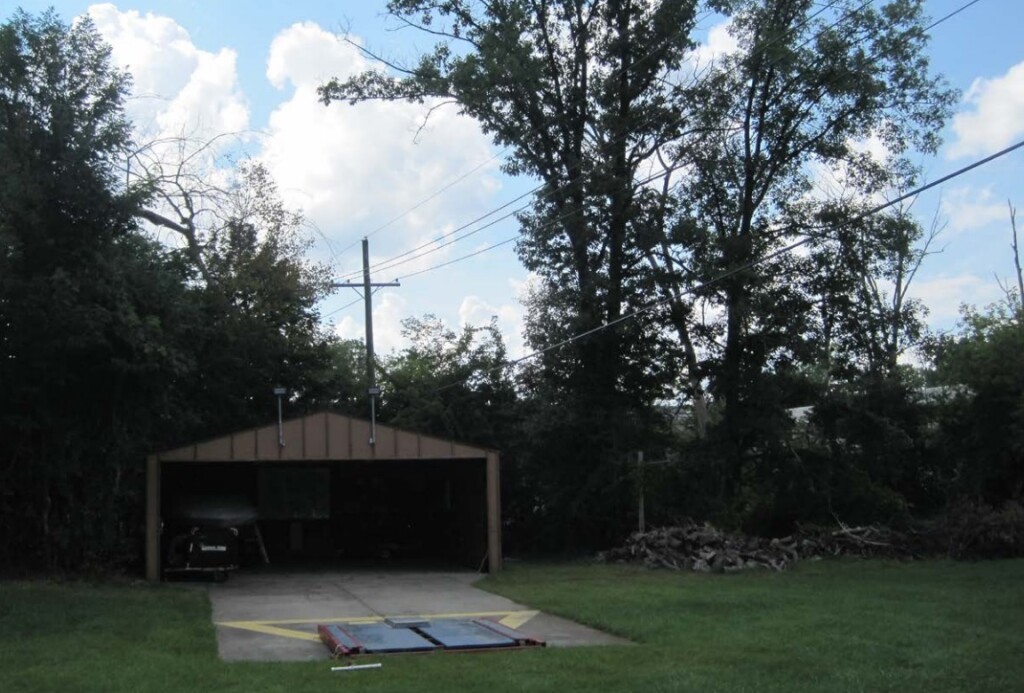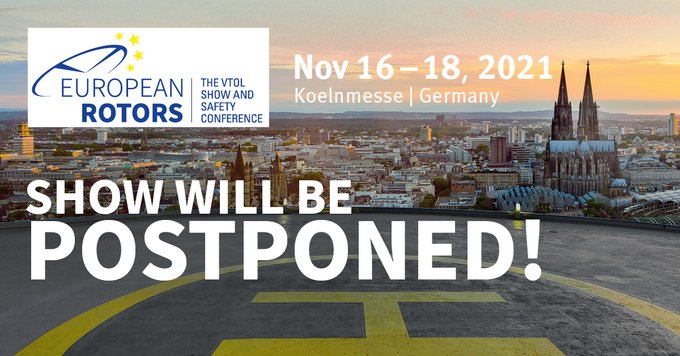Pilot Goose(d) Surprised and Crashed (MD369E N1601Y)
On 3 September 2018 private MD Helicopters 369E N1601Y was substantially damaged and the pilot seriously injured in an accident near Orchard Lake, Michigan.
The US National Transportation Safety Board (NTSB) explain in their factual report (issued only at the end of May 2020) that the pilot, an 87-year-old male former engineering company executive with 3600 hours total flight time…
…was planning a short flight in the local area. The helicopter was stationed on a wheeled helicopter transportation dolly at his private heliport. The helicopter departed from the dolly and came to an in-ground effect hover. As the pilot was maneuvering the helicopter to the right of the dolly at a hover, a flock of Canada Geese (Branta canadensis) “came flying into the front and right” of the helicopter.
Canada Geese are what can be legitimately referred to as ‘large flockers’… That’s because they are typically around 8 lb (3.6 kg), so will above the certification requirements for all but larger Part 25 airliners, but they also often fly in V-shaped formations, or ‘skeins’, that provide aerodynamic efficiency but can result in multiple bird strikes. While traditionally migratory, they are a species that increasingly live in and around urban areas, golf courses and parks with water features being especially popular with Canada Geese. Indeed the pilot’s private landing site, referred to grandly as a ‘private heliport‘ by the NTSB was located about 350 ft (107 m) south of Upper Straits Lake.
The pilot reported he remembered “quickly moving” the helicopter back to the right to avoid the birds, and that it was the last action he could recollect until after the impact when the helicopter was laying on its side.
The helicopter came to rest on its left side on a flat grass field in front of the heliport, with the main rotor blades separated from the main rotor hub and the tail rotor gearbox separated from the tailboom. Emergency services personnel extracted the pilot from the wreckage.
The pilot sustained serious injuries to his head and body. A review of the pilot’s medical records by the NTSB found the left side of the pilot’s face and the right side of the pilot’s head sustained impact injuries from the accident sequence.
The pilot was not wearing a flight helmet during the accident flight, nor was he required to do so. The NTSB investigator-in-charge proposed to the manufacturer’s air safety department about producing and distributing educational guidance encouraging pilots to wear a flight helmet and the manufacturer agreed. MD Helicopters Operational Safety Notice OSN2019-002 Aviation Life Support Equipment – Flight Helmets was created and released to the public in April 2019.
UPDATE 15 September 2020: NTSB Probable Cause
The pilot’s failure to maintain helicopter control and terrain clearance while in a hover after performing an evasive maneuver to avoid wildlife.
The ‘Heliport’
The NTSB also reveal photographs of this private landing site. Noticeable is the proximity (c 15 ft / 5 m from the centre of the pad) of power lines, which would have reduced the pilot’s ability to manoeuvre during the encounter with birds.

Looking Away From the Hangar to the East: The Birds Would Have Approached from the Left (Credit: FAA via NTSB)
Safety Resources
- Impromptu Landing – Unseen Cable
- Fatal Wisconsin Wire Strike When Robinson R44 Repositions to Refuel
- A Try and See Catastrophe: R44 Accident in Norway in Bad Weather
- Fatal R44 Loss of Control Accident: Overweight and Out of Balance
- R44 Force Lands After Improper Repair
- Insecure Pitch Link Fatal R44 Accident
- Beware Last Minute Changes in Plan
- When Habits Kill – Canadian MD500 Accident
- Ambulance / Air Ambulance Collision
- Vortex Ring State: Virginia State Police Bell 407 Fatal Accident
- USAF HH-60G Downed by Geese in Norfolk, 7 January 2014
- Swedish Military NOE Helicopter Bird Strike
- Safety Lessons from a Fatal Helicopter Bird Strike: A fatal accident occurred on 4 Jan 2009 involving Sikorsky S-76C++ N748P of PHI in Louisiana that highlighted a range safety lessons. We also discuss current activity on enhancing bird strike requirements.
- Power of Prediction: Foresight and Flocking Birds looks at how a double engine loss due to striking Canada Geese had been predicted 8 years before the US Airways Flight 1549 ditching in the Hudson (which was just days after the Louisiana helicopter accident).
- UPDATE 8 September 2020: Air Ambulance Helicopter Downed by Fencing FOD
- UPDATE 20 September 2020: Hanging on the Telephone… HEMS Wirestrike
- UPDATE 5 February 2021: Inexperienced IIMC over Chesapeake Bay: Reduced Visual References Require Vigilance
- UPDATE 30 October 2021: RLC B407 Reverses into Sister Ship at GOM Heliport
ESPN-R / EHEST Leaflet HE 1 Safety Considerations
Aerossurance was to have run training workshops at the EHA European Rotors VTOL Show and Safety Conference in Cologne in November 2020 on a) Safety Culture and Leadership and b) Contracting Aviation Services: An Introduction to the Basics. They have been postponed to 2021 due to COVID-19.






Recent Comments